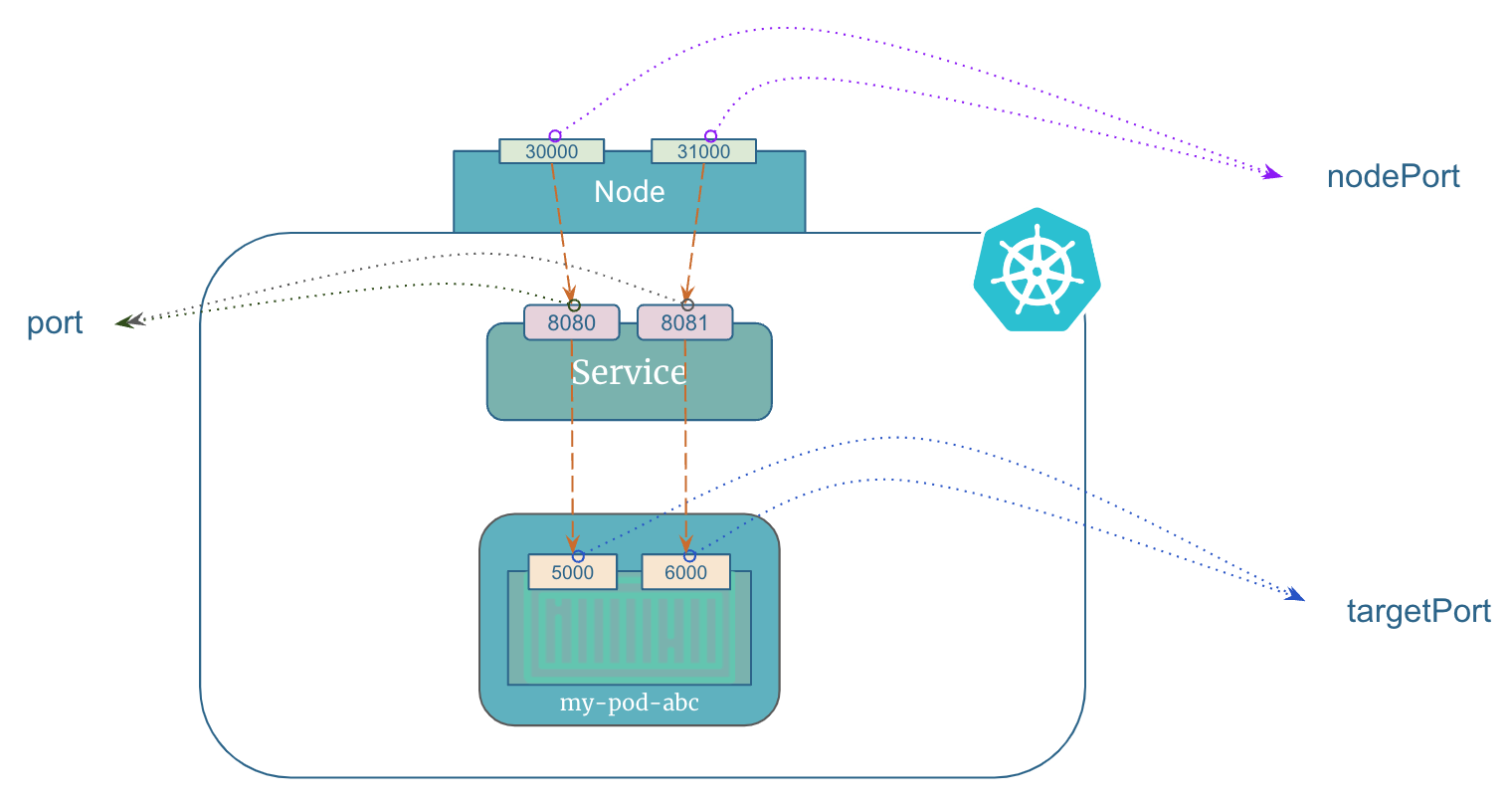Difference Between port, targetPort, And nodePort in Kubernetes Service¶
A kubernetes service can have different types of ports fields, including port, targetPort, and nodePort.
Here's a brief explanation of each:
-
port: This is the port on which the service listens. When a client sends a request to the service, it connects to this port. -
targetPort: This is the port on which the pods in the service are listening. When the service forwards traffic to the pods, it uses this port. -
nodePort: This is a port that is exposed on each node in the cluster. When traffic comes to this port, it is forwarded to the service's port.
port vs targetPort vs nodePort - An Example¶
Let's understand the difference between port, targetPort, and nodePort in more detail with an example.
Remember that an application can run multiple services on different ports in a container. (Refer to the image below)
Suppose we have a Node.js application running inside a container that serves the API requests on port 5000. Also, the container has a metrics service running on port 6000 to expose application metrics.
The kubernetes service manifest would look something like this:
If you access my-service:8080 the traffic is routed to 5000 of the container. Similarly, if you access my-service:8081 then it is redirected to 6000 of the container.
To access the service from outside the kubernetes cluster someone needs to expose the port on worker nodes so that the traffic is redirected to a port of the container. This is node port(port exposed on the worker node).
In the example above, you can access the service from outside the cluster using <node-ip-address>:<nodePort>.
Suppose IP address of one of the worker nodes is 3.109.154.210. You can access the http and metrics endpoint using 3.109.154.210:30000 and 3.109.154.210:31000 respectively.
